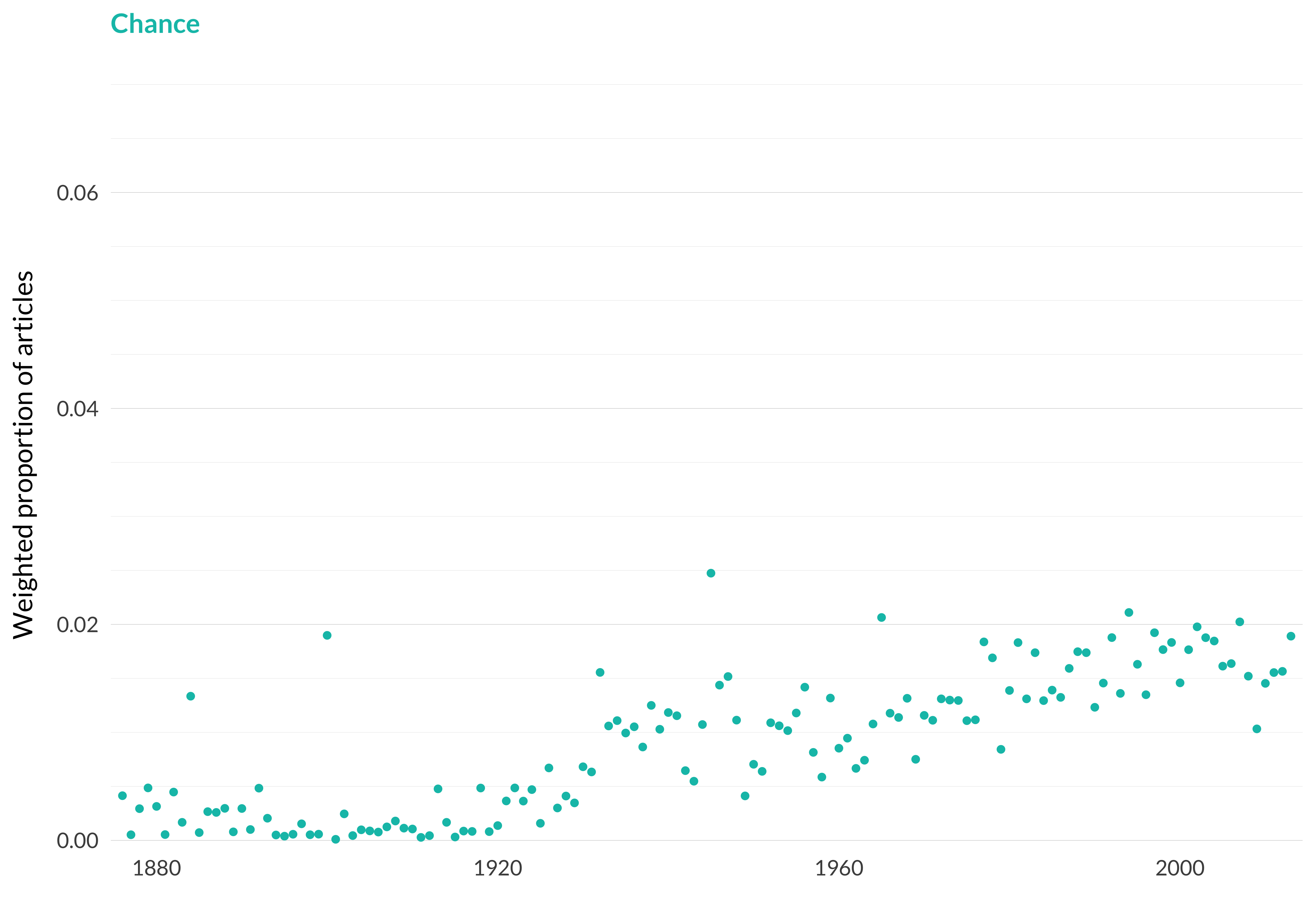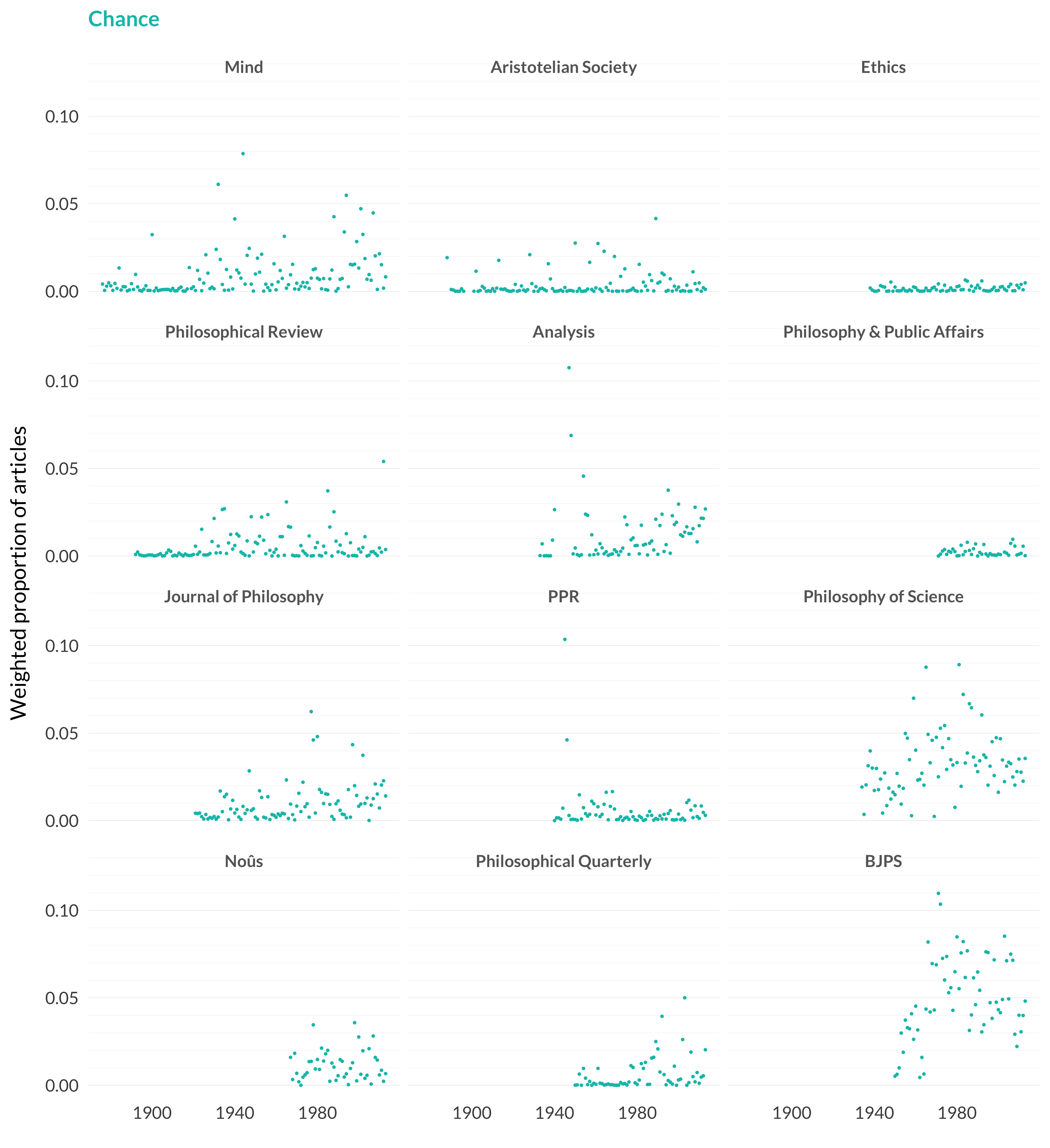2.44 Chance
Category: Philosophy of Science
Keywords: chances, chance, probability, probabilities, prob, frequency, random, probable, frequencies, sample, coin, probabilistic, propensity, bayesian, distributions
Number of Articles: 507
Percentage of Total: 1.6%
Rank: 12th
Weighted Number of Articles: 398.2
Percentage of Total: 1.2%
Rank: 25th
Mean Publication Year: 1977
Weighted Mean Publication Year: 1979.4
Median Publication Year: 1978
Modal Publication Year: 2007
Topic with Most Overlap: Theory Testing (0.053)
Topic this Overlaps Most With: Theory Testing (0.0731)
Topic with Least Overlap: Emotions (0.00027)
Topic this Overlaps Least With: Belief Ascriptions (0.00039)

Figure 2.106: Chance.

Figure 2.107: Chance articles in each journal.
Comments
I’ve called this chance, and it does have a lot to do with chance, but a more perspicuous name would be philosophers of science talk about probability because the big difference between this and formal epistemology is that the folks here are philosophers of science, and the folks there are epistemologists. There are a lot of papers about chance in here—the second characteristic article is Michael Strevens responding to David Lewis’s revision of the “Principal Principle”—but there are also a lot of papers about probabilistic reasoning in scientific methodology.
Now, I was very surprised that the model could tell the difference between the philosophy of science articles and the epistemology articles. I have a reasonably strong “know-it-when-I-see-it” sense of how philosophy of probability gets divided up into philosophy of science and epistemology. But I wasn’t sure it was anything more than a set of gut reactions/prejudices, and I would not have expected at all that a machine-learning algorithm could replicate it. Yet here we are—the model really did do a very good job of splitting them up.
It’s not like it doesn’t think the two are connected. This topic and formal epistemology are two of the closest connected topics. But it does just enough to tell them apart. We can see this by looking at two David Lewis articles.
| Subject | Probability |
|---|---|
| Chance | 0.3773 |
| Ordinary language | 0.1908 |
| Composition and constitution | 0.0641 |
| Time | 0.0627 |
| Laws | 0.0616 |
| Modality | 0.0488 |
| Thermodynamics | 0.0370 |
| Formal epistemology | 0.0231 |
| Subject | Probability |
|---|---|
| Formal epistemology | 0.7362 |
| Arguments | 0.0639 |
| Chance | 0.0599 |
| Theory testing | 0.0452 |
| Modality | 0.0421 |
| Time | 0.0352 |
That’s pretty good; in each case the model gives the intended topic 10 times the probability it gives the unintended topic. It’s not perfect; I really don’t know why it thinks the Sleeping Beauty paper is just about as likely to be a Modality article as the Humean Supervenience article. But this is a quibble; I’m really happy that the model found this distinction. It made looking at the splits between Epistemology and Philosophy of Science much easier.